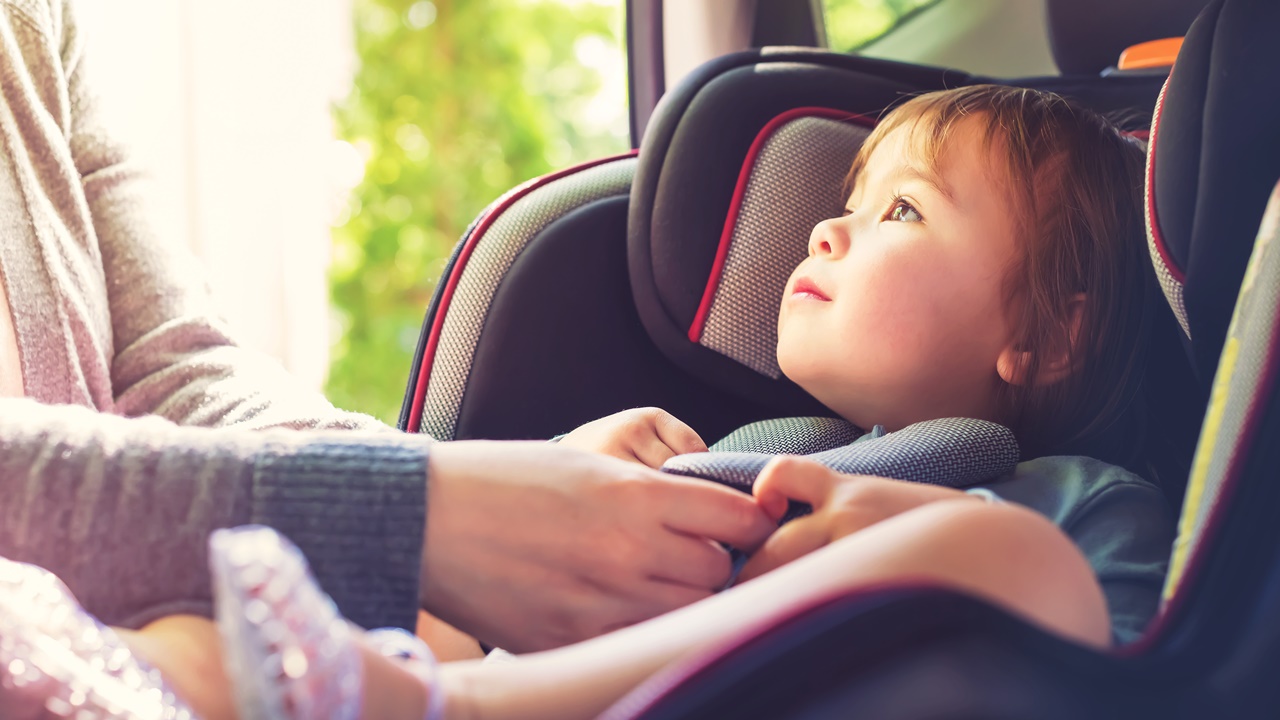When traveling in a car with a child, safety should always be a top priority. Handling a delicate infant or an active toddler while on the road requires extra caution to minimize potential risks. Here are some essential tips to ensure car safety for kids:
1. Choose the Right Car Seat:
In Pakistan, it’s common to see children held in laps on the front seat, but this practice is not safe. Instead, use a proper baby car seat installed in the back seat, away from airbags.
– Select a car seat appropriate for your child’s age, weight, and height.
– The back seat is the safest place for your child, reducing the risk of injury during a crash.
– Ensure the car seat is correctly installed and positioned according to safety standards, including direction and angle.
2. Ensure Proper Seat Belt Use:
Once your children have outgrown booster seats, it’s crucial to ensure they are properly secured with a seat belt every time they ride in the car. This habit instills responsibility from a young age and enhances their safety.
– Teach your children to buckle up correctly every time they get into the car.
– Avoid twisting the seat belt or placing it under their arm, as this can compromise its effectiveness.
– Ensure the seat belt fits snugly across your child’s shoulder and lap without being too loose.
– Regularly check that the seat belt maintains a tight grip to provide optimal protection in case of a sudden stop or collision.
3. Securely Lock Car Doors:
It’s essential to always lock all car doors immediately upon entering the vehicle with your child. Children, whether intentionally or unintentionally, can easily reach door handles and open doors, posing a significant safety risk.
– Make it a habit to lock all doors as soon as everyone is inside the car.
– Ensure child safety locks are activated on doors accessible to children in the back seats.
– Regularly remind children not to play with door handles or attempt to open doors while the vehicle is in motion.
Taking these precautions helps minimize the risk of accidental door openings and ensures your child’s safety during car travel.
4. Regular Car Inspection for Child Safety:
When traveling with your child, ensuring their safety requires vigilance and regular maintenance of your vehicle. Here are important steps to take:
– Inspect Seat Belts and Airbags: Regularly check that seat belts are functioning properly and airbags are in working condition. Ensure there are no twists or damages that could compromise their effectiveness.
– Check Child Safety Locks: Verify that child safety locks on doors are properly engaged, especially in the rear seats where children are seated.
– Verify Car Seat Installation: Ensure car seats and booster seats are securely installed according to manufacturer guidelines. Replace them if they have been involved in any crash, even if the damage isn’t visible.
– General Vehicle Maintenance: Keep up with routine maintenance of your vehicle to ensure overall safety, including brakes, tires, lights, and fluid levels.
By maintaining a proactive approach to vehicle inspection and maintenance, you help minimize risks and ensure your child travels safely in the car.
5. Never Leave Your Child Unattended in a Parked Car:
It’s crucial to never leave your child alone in a parked car, even for a short time while running errands or fetching something nearby. Here’s why:
– Rapid Temperature Rise: Temperatures inside a parked car can escalate rapidly, even on mild days. This can lead to heatstroke or other health hazards for your child.
– Safety Risks: Leaving a child unattended in a car can expose them to various safety risks, including accidental door openings, potential abduction, or injury from exploring inside the vehicle.
– Always Take Your Child With You: Whenever you leave the car, bring your child along, even if you expect to return quickly. If it’s not feasible to bring them, consider rescheduling your errand or task.
– Educate Others: Ensure that family members, caregivers, and anyone who transports your child understands the importance of never leaving them alone in a vehicle.
By prioritizing your child’s safety and being vigilant, you can prevent potentially dangerous situations and ensure their well-being at all times.
6. Educate Your Child About Car Safety:
It’s crucial to teach your child about car safety from a young age to instill good habits and ensure their well-being. Here are some important tips:
– Explain Car Safety Rules: Teach your child to maintain a safe distance from moving cars when playing or walking near roads. Emphasize the importance of staying close to an adult and looking both ways before crossing the street.
– Seat Belt Awareness: Teach your child the importance of wearing a seat belt every time they ride in a car, whether in a car seat, booster seat, or directly using a seat belt. Explain that seat belts keep them safe during car rides.
– Stay Seated: Emphasize the importance of staying seated while the car is moving and not distracting the driver. Explain that moving around in the car can be dangerous and may cause accidents.
– Lead by Example: Set a good example by always wearing your seat belt and following traffic rules when driving or walking with your child.
– Encourage Open Communication: Create an environment where your child feels comfortable asking questions about car safety and discussing any concerns they may have.
By teaching your child about car safety early on and reinforcing these lessons consistently, you help them develop lifelong habits that prioritize their safety in and around vehicles.












Add Comment